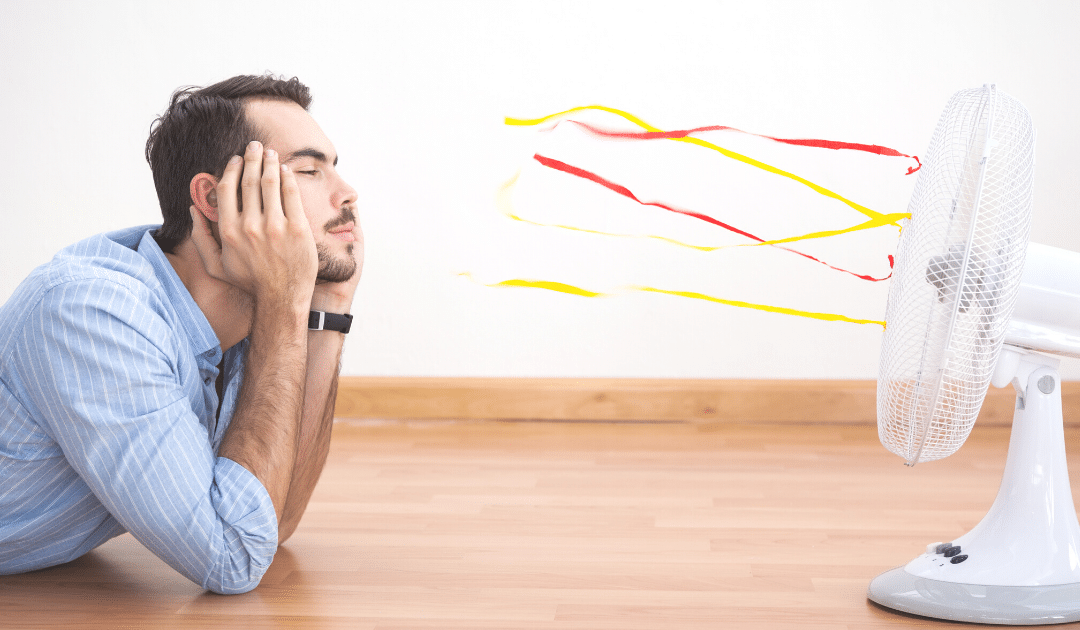Summer is here and (unfortunately for most) so is the heat and humidity. But humidity in your home isn’t just uncomfortable. Did you know it can also do some serious damage to your house and your health?
Humidity describes the amount of moisture in the air. When the humidity is high, a hot day feels that much hotter. When there’s too much humidity inside your house or apartment, mold and mildew begin to take hold, rotting the wood and creating the ideal environment for dust mites and other allergens. If you’ve ever noticed a musty odor in your home, chances are you are smelling mold and mildew. And if you have asthma or allergies, this can make your symptoms that much worse.
What causes humidity?
Cooking, bathing, washing dishes, and line drying clothes inside can all add moisture to the air inside your home. Leaks in your pipes or cracks around your doors and windows can let in humid air, as can dampness from your home’s crawl space. Even houseplants can create humidity.
How can you tell if your home is too humid?
Look for condensation on windows or wet spots on ceilings or walls. You may notice mildew and mold. You also can measure humidity with a hygrometer, available inexpensively online. The ideal humidity indoors is between 30-50%.
Tips to reduce humidity
The good news is that you can take steps to decrease the humidity in your home—and improve your air quality while reducing your cooling costs. Here’s how.
Tip #1: Running your air conditioner will help with humidity.
-
- Set your air conditioner to “auto” rather than “on.” During the “on” setting, your air conditioner blows air over a wet coil which can create more humidity.
- Make sure your air conditioner is well maintained. Change the filters. Keep drip pans and drain lines clear and clean.
- If your air conditioner is too big for your home, it will have shorter cooling cycles. That won’t be enough to reduce your home’s humidity.
Tip #2: Buy a dehumidifier or consider these DIY alternatives.
-
- Since lower humidity feels cooler, a dehumidifier will allow you to reduce the use of your air conditioner, thus reducing your cooling costs.
- Though not as effective as a dehumidifier, you can try DIY versions:
- A basket or can of charcoal briquettes can absorb humidity in a room. Replace it every 2-3 months.
- Rock salt or kitty litter also absorbs moisture in the air. Take two similarly size buckets. Drill holes in the bottom of one. Stack the drilled bucket inside the other bucket – making sure to leave a gap. You may wish to put an object in between the buckets to create that space. Fill the top-drilled bucket with salt or kitty litter. Then, check it every few days. Water will collect in the bottom bucket. Empty as needed.
Tip #3: Fix leaks and gaps.
-
-
- Fix leaky faucets and pipes so there’s no excess water in your home.
- Put caulk and weatherstripping around doors and windows to keep cool air in and hot, humid air out.
-
Tip #4: Create airflow.
-
-
- Install vent fans in the kitchen and bathrooms. Keep them on a little longer after showering or cooking. Fans move air around and help with evaporation.
- Make sure there is ventilation in your attic. A lack of airflow can cause condensation, creating mold growth in your home’s structure.
- If you have a sealed, unused fireplace, that can cause condensation. Make sure there is airflow or it could affect your walls.
-
Tip #5: Limit humidity from under your home.
-
-
- Cover dirt floors in your crawl space with a vapor barrier. This piece of plastic will help contain the humidity below your house.
- Slope the soil away from your foundation so water doesn’t pool underneath your home.
- Keep gutters and downspouts clear so you don’t have standing water. Extend your downspouts so they flow away from your home.
-
Tip #6: Be conscious of daily living choices.
-
-
- Instead of hanging clothes inside to line dry, hang them outside (if allowed in your community).
- Lower the temperature of your showers by a few degrees, and take shorter showers. This will help reduce humidity.
- Crack the window open during a shower to help release the extra humidity.
-
Tip #7: Position your house plants to help with humidity.
-
-
- Some house plants produce moisture and others absorb it. A Boston fern will absorb humidity while a spider plant will make it more humid.
- Move your moisture-producing plants to one room with good airflow or outdoors if possible.
-
Follow these steps and you’ll soon be enjoying a cooler, more comfortable home.
This article is furnished by California Casualty, providing auto and home insurance to educators, law enforcement officers, firefighters, and nurses. Get a quote at 1.866.704.8614 or www.calcas.com.
- Graduation – When to Remove Your Child from Your Auto Policy - May 18, 2023
- How to Prevent Catalytic Converter Theft - May 17, 2023
- How Much Does Home Insurance Cost? - May 17, 2023

